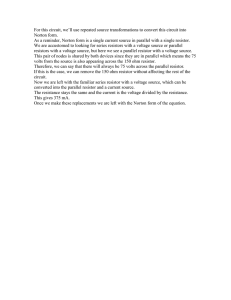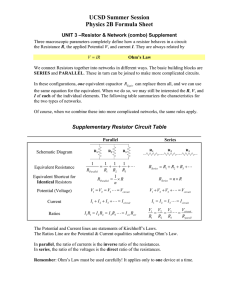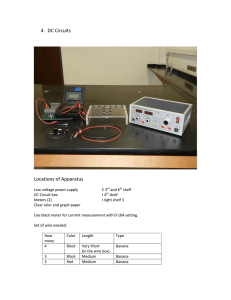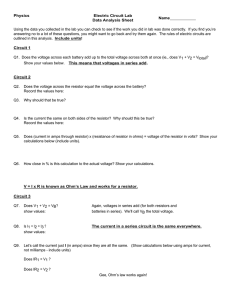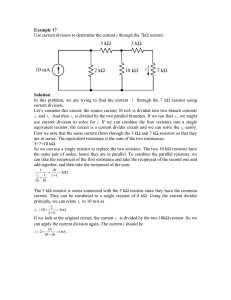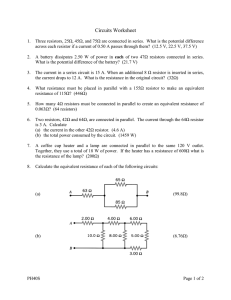Use repeated source transformations to convert this circuit into Norton... As a reminder, Norton form is a current source in...
advertisement
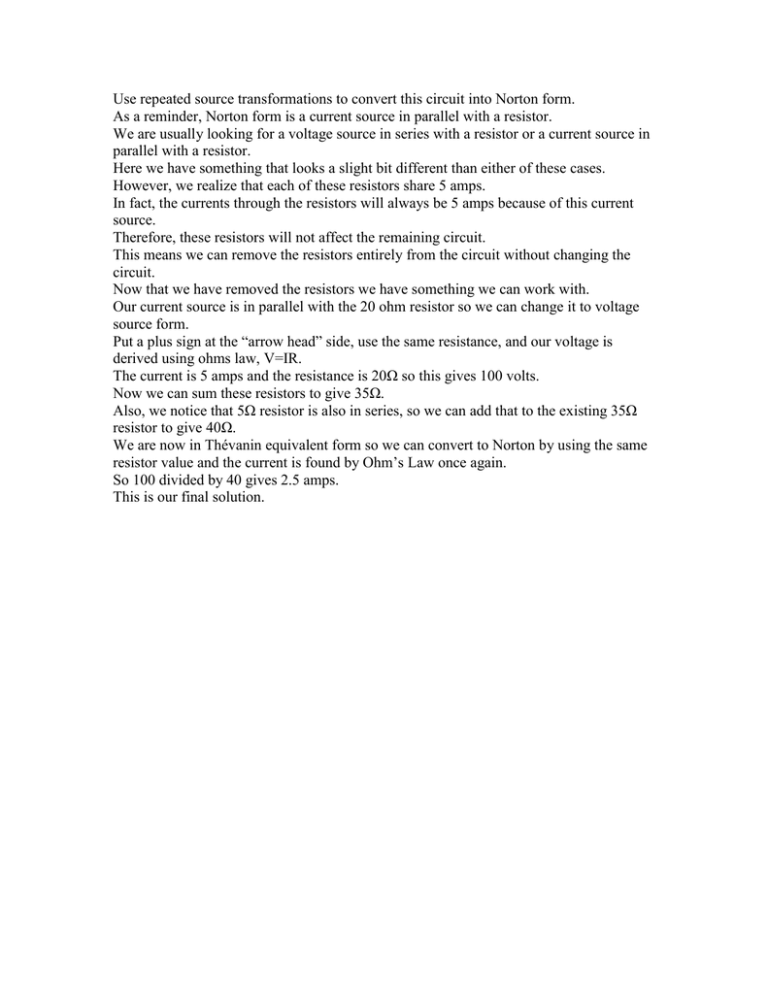
Use repeated source transformations to convert this circuit into Norton form. As a reminder, Norton form is a current source in parallel with a resistor. We are usually looking for a voltage source in series with a resistor or a current source in parallel with a resistor. Here we have something that looks a slight bit different than either of these cases. However, we realize that each of these resistors share 5 amps. In fact, the currents through the resistors will always be 5 amps because of this current source. Therefore, these resistors will not affect the remaining circuit. This means we can remove the resistors entirely from the circuit without changing the circuit. Now that we have removed the resistors we have something we can work with. Our current source is in parallel with the 20 ohm resistor so we can change it to voltage source form. Put a plus sign at the “arrow head” side, use the same resistance, and our voltage is derived using ohms law, V=IR. The current is 5 amps and the resistance is 20Ω so this gives 100 volts. Now we can sum these resistors to give 35Ω. Also, we notice that 5Ω resistor is also in series, so we can add that to the existing 35Ω resistor to give 40Ω. We are now in Thévanin equivalent form so we can convert to Norton by using the same resistor value and the current is found by Ohm’s Law once again. So 100 divided by 40 gives 2.5 amps. This is our final solution.
